Now You See It, Now You Don't
Or - Scenes From the Road, Kigoma to Nyakanazi Return Journey.
(I've been a while without internet, and am now in Singida, roughly in the middle of the country. But we'll continue where we left off).
I realise now that on my journey to Kigoma, the first third of the road from Nyakanazi (about seventy miles as far as Kibondo) was by far the worst part.
I departed Kigoma after six days there, zoomed along Roy's new tarmac for about fifteen miles, reached the dirt, and started to wonder why it was that on the previous Tuesday I had seriously thought about turning back and not visiting Kigoma at all. Traffic allowing (that is, pedestrians and cyclists) I was averaging close to 40mph, sometimes reaching 45mph. There were a few corrugated lengths which slowed me down pretty quickly, but otherwise it was a brilliant ride.
But there was still the dust.......
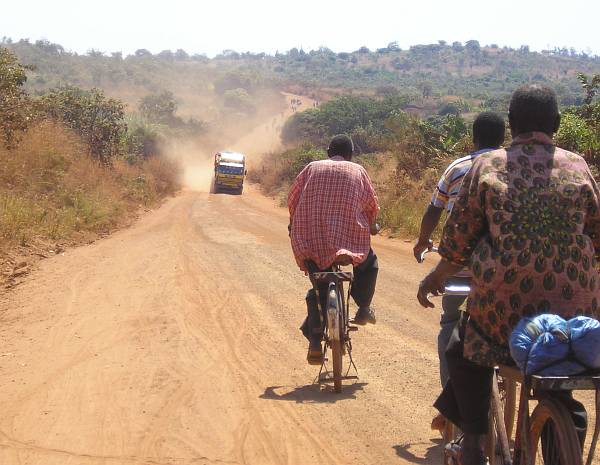
You go out for a pleasant cycle ride in the morning sunshine
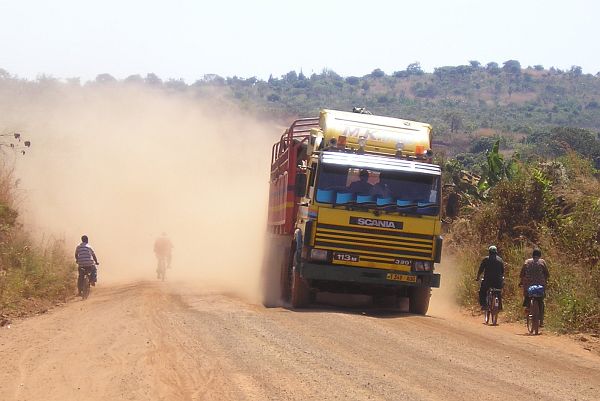
........ and look what you get!
(Yes, those bicycles can nip in and out of the drainage ditches at a whim .... be blowed if I can)
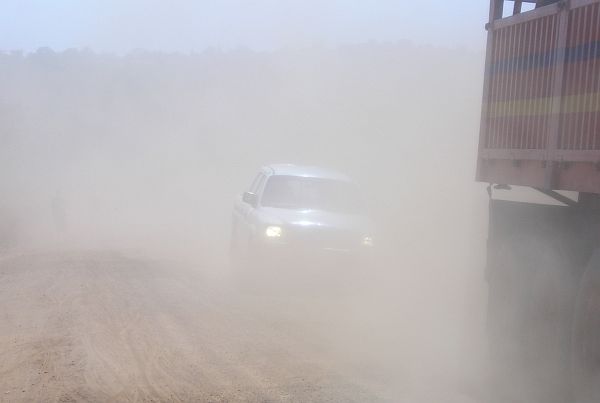
There's even a car lurking that seems to be enjoying the taste of the good African earth.
When you come up behind a slow heavy truck, this is all you can see......
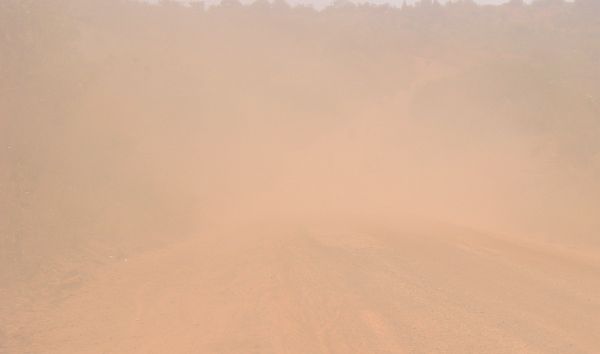
Actually locating the back of the truck is a little easier than charting the route around it.
But for all that, the 140 miles from Kigoma was a pretty good ride. Lots of people on the road and quite a few villages. And yes, the road condition wasn't quite as good as this in the vicinity of those villages, but still not bad.
I never saw much of the sugar cane harvest in Uganda that I was told about, but it's returned in this part of Tanzania.
But not carted around on huge purpose-made wagons.
No, it's carried very gracefully on peoples' heads (men and women). About half a dozen canes tied together, seven foot long, balanced aloft in line with the direction of walking. And these people even manage to dodge out of the way of speeding buses without so much as a stumble, or more importantly, turning their heads, which would send the canes right into the path of the buses. So there's not much damage done to the road by this sugar cane harvest I'm glad to see.
Two other commodities are noticeable on the road, carried on both bicycles and motorbikes; rolls of corrugated steel roofing sheet, and double mattresses.
There's no doubt that two-wheel vehicles have evolved in Africa to easily carry as much as the average car - if not more. Motorbikes carry three double mattresses, bicycles only one - but who's counting. All on this sandy, bumpy, dusty road.
Corrugated steel is carried three sheets at a time, rolled up, fixed across the rear carrier. Slightly diagonally, so the vehicle width is about six foot rather than the full seven foot six. That removes the need to have one of those "Wide Vehicle" signs hung on the back.
I ventured into a shallow drainage ditch for more photos. It doesn't look it, but there's quite a steep camber just there, and a thick layer of loose dust.
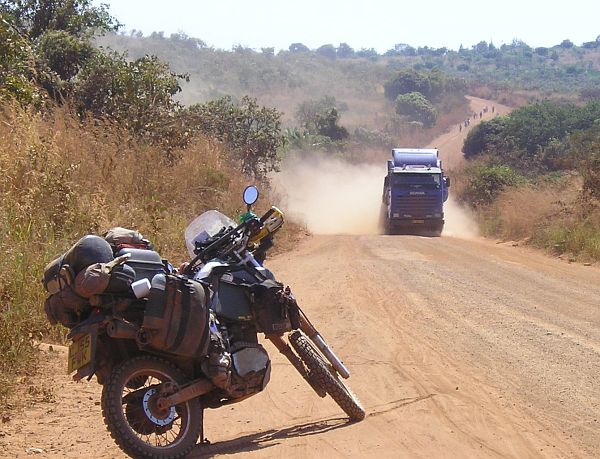
Now you see it......
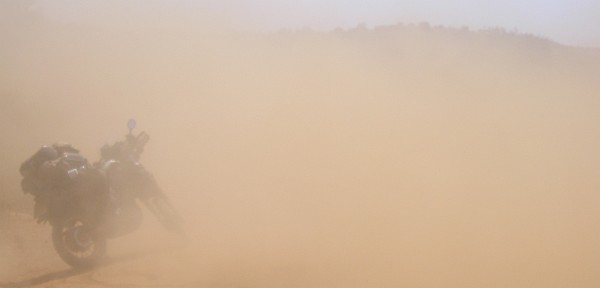
....... now you don't.
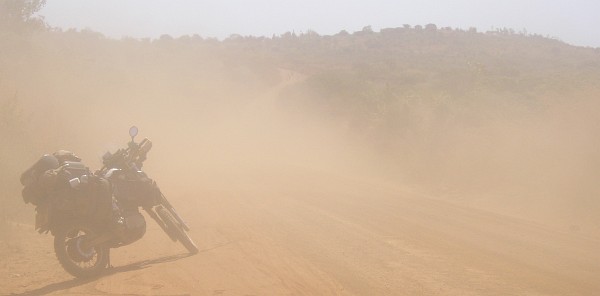
Well, almost.
About 20 miles before Kibondo, my overnight stop, the surface starts to deteriorate, with the return of the main feature, obscured transverse rainwater ditches and camouflaged holes full of soft dust. Then numerous hills and valleys which get ravaged in the rainy season, which I assume is why large stones and cobbles become an additional feature. I guess to try to keep the surface intact during the rains.
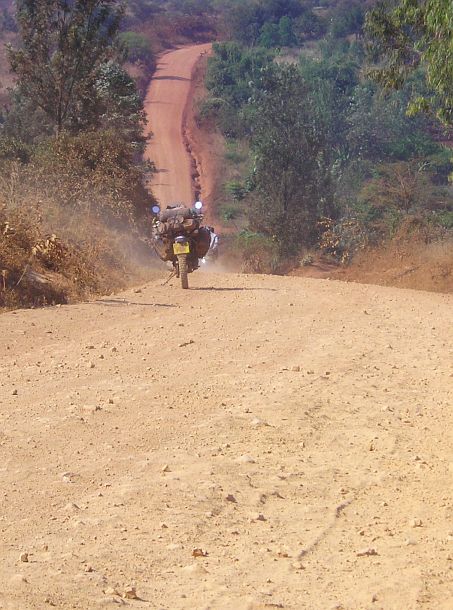
One of many river valleys on the approach to Kibondo.
Mix sharp stones and cobbles with cocoa powder and pound vigorously for a month or more, adding lots more cocoa powder frequently to completely hide the loose stones underneath.
The next morning, departing Kibondo, I knew immediately why I nearly abandoned my visit to Kigoma last week. The nice dirt road of the previous day had changed into a mass of loose stone chippings and thick soft dust taking the form of deep holes, corrugations, transverse ditches, ruts and every other possibility you can imagine.
I was careful this time to look out for those deep channels right across the road, cut by the rains and filled with stones and thick dust. But distracted by the concentration needed, I found myself a couple of times in a concealed rut which I could see became deeper and deeper ahead, and it was too late to steer out. And braking wasn't really an option either. These ruts are the width of a double truck tyre, filled with loose stones in the bottom with a layer of soft dust, maybe three inches deep, on top. The nearest you can get, I think, to the ubiquitous 'riding on marbles'. So I quickly made sure to identify those in good time.
I found this pretty tiring on top of yesterday's relatively easy (but 140 miles) dirt ride. So I was persuaded to stop a couple of times for photos, when I could find a spot to park the bike without too much paddling about in deep powder on the edge of the road.
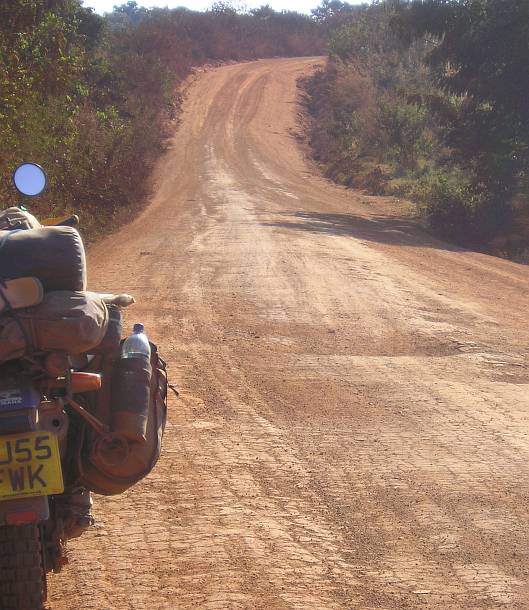
There are a lot of holes here but you can only see the one not full of dust. That's how it was, nothing much visible until too late.
Going up the hill ahead, the tyre tracks are dust and stone-filled ruts. On both sides of those are steep rutted cambers dug by the rains, so zero choice of line here. Hope nothing comes the other way.
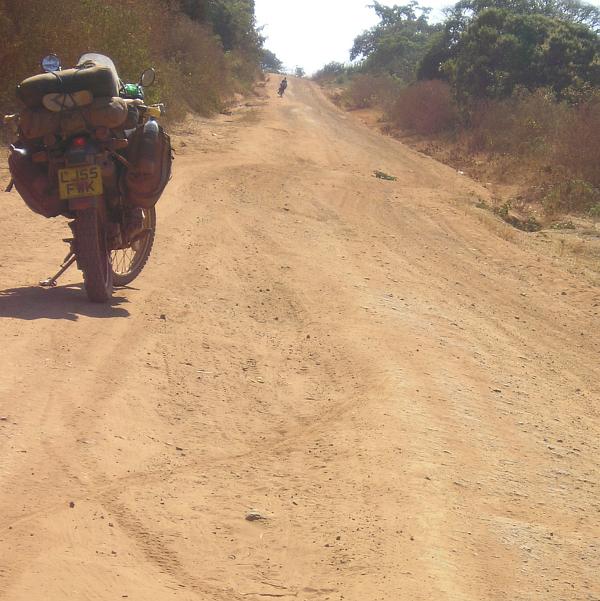
More hidden holes here........
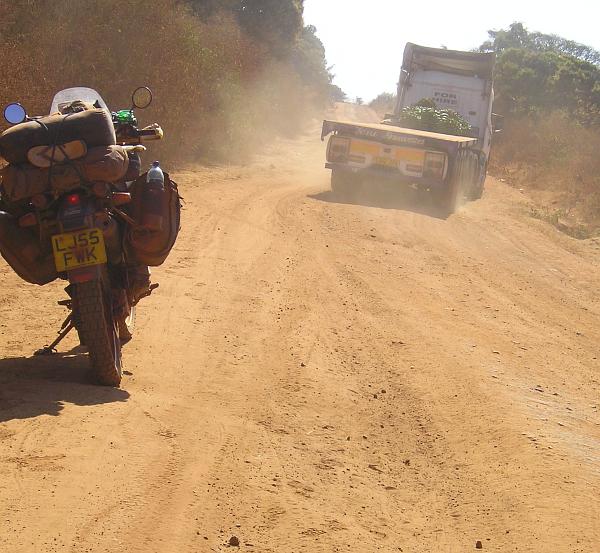
..... that even the big truck has to zigzag round, squeezing past my parked bike in the process. About half a mile an hour here so not much dust off its wheels, thankfully.
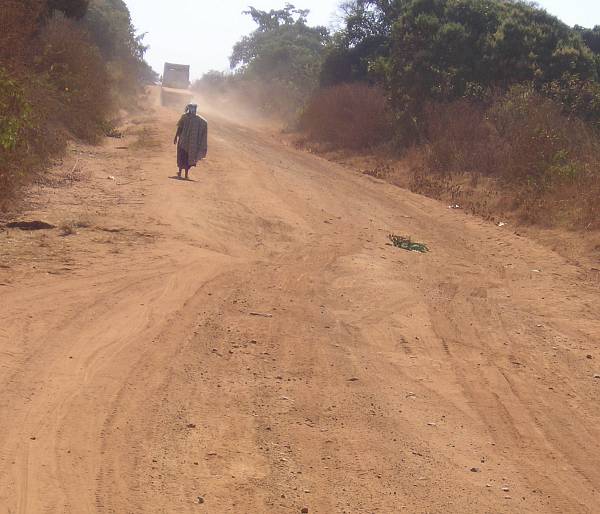
And a local villager finds it easier on foot I think.
I rode past this spot at first, turned round and came back to take the photos. Because of the angle of the sun, from the other direction all this was completely invisible, just a bland orange mass of dust.
The road condition deteriorated more and more towards Nyakanazi where the tarmac returned, and I thought no wonder I was reticent about riding this road. But the two-thirds between Kibondo and Kigoma were OK.
I received a couple of those 'signs' or 'messages of fate', or maybe it was the same one twice.
On the way to Kigoma, on the bad stretch, one of quite a few mini-buses hurtled the other way with the words "Cape Town" boldly emblazoned across the top of the windscreen.
"Maybe it's actually going there," I thought. But not very likely. Ten days away at the very best.
On my return ride, on the good stretch, the same mini-bus hurtled the other way once again.
I'll take that as a good omen.
So then it was a longish stretch of good tarmac to Kahoma, but even then some dirt intervened. Three stretches were being resurfaced and bridges rebuilt, the longest being about four miles of dirt just before Kahoma, but in good condition.
